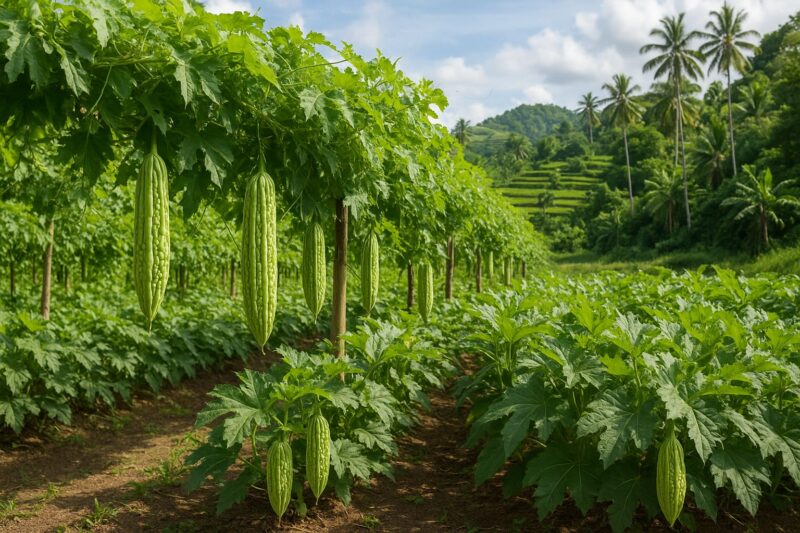Carrots—karot—bring bright color and crunchy sweetness to salads, stews, and even desserts, yet they’re less common in Filipino gardens because they need loose, cool soil to form those long, tapered roots. From highland farms in Bukidnon to a few lucky plots in Bulacan, however, homegrown carrots can thrive when you match timing, bed preparation, variety choice, moisture, and gentle thinning. After trialing carrots in my own Bulacan raised beds—sometimes with only skinny “core” roots, other times with perfect tapers—and swapping tips with growers up in Tagaytay and in Baguio’s terraces, I’ve settled on a routine that delivers crisp, sweet carrots almost anywhere in the Philippines.
Variety choice makes all the difference. Nantes types yield cylindrical, blunt-tipped roots that tolerate slightly heavier soils, while Imperator varieties produce long, tapered roots best suited to sandy loams. In lowland Bulacan, I stick with Nantes and a local “Purple Haze” heirloom for its eye-catching color and quicker maturity (about 60 days). Upland growers in Benguet often favor a Chantenay type—short, stout roots that handle cooler nights and shallow soils. Mixing two types gives you both crunchy snacking carrots and longer roots for slicing and roasting.
Soil preparation is crucial. Carrots require deep, fine-textured, stone-free beds so roots can expand straight. I build raised beds 30 centimeters high, fill them with equal parts homemade compost and aged topsoil, then sift out any stones or clods larger than a fingertip. In clay-heavy plots, I blend in rice hull charcoal or coarse sand to improve drainage and loosen the mix. In sandy coastal soils—common in Samar—I add extra compost to hold moisture. Aim for a pH of 6.0 to 6.8; if your soil is too acidic, a light dressing of dolomite lime helps balance it.
Timing your sowing is equally important. Carrots germinate best when soil temperatures range between 18° and 24° C, so in lowland areas I sow from November through January—avoiding both the intense heat of April–May and the erratic rains of midyear. In upland locations, you can extend sowing into February. In Bulacan, my first sowing in late December gave perfect roots by late February; a second sowing in January under temporary shade cloth yielded a March harvest.
Sowing technique makes a difference. Broadcast fine seed over a gently firmed bed, then rake lightly to cover seeds just one centimeter deep. For neat rows, draw furrows 20 centimeters apart, broadcast seeds thinly, and cover. Keep the seedbed consistently moist—mist twice daily—until germination appears in 7–14 days. Once seedlings have two true leaves, thin to five-centimeter spacing by snipping extra plants at soil level to avoid disturbing roots.
Water management calls for consistency. Carrots need even moisture during root bulking but resent both dryness and waterlogging. I water deeply each morning—so soil stays damp five to ten centimeters down—then allow the surface to dry slightly by evening. Mulching lightly with rice straw or leaf mold conserves moisture, suppresses weeds, and keeps temperatures steady.
Light feeding supports healthy roots. Since carrots have a long growing cycle, I focus most nutrition at bed prep. If tops appear pale midseason, I apply a light foliar feed of compost tea rather than side-dressing heavy fertilizers that might fork or branch roots. A sprinkle of wood ash around the drip line can supply potassium without disrupting soil structure.
Pest and disease checks are simple. Cutworms can sever young seedlings at night; a collar of cardboard around each young shoot or an early-morning check and gentle earthing-up of soil around the base prevents damage. Carrot fly—rare in home gardens—lays maggots that tunnel roots; floating row covers during the first month deter egg-laying flies. Aphids on foliage respond to a mild neem oil spray, and leaf spots from bacterial pimples clear up with good air circulation.
Harvest arrives 60 to 90 days after sowing, depending on variety. Test a few by gently brushing back soil to check root diameter and tapers. If roots reach two to three centimeters wide at the shoulder and the orange flesh snaps cleanly, it’s time. Pull roots gently to avoid breakage, shake off loose soil, and trim tops to two centimeters above the crown.
Postharvest, lay carrots in a shaded, ventilated spot for a few hours, then store in a cool, moist environment—covered with damp sand or shredded leaves—to preserve crispness for up to a month. In Bulacan’s relatively warm storage corner, I’ve kept carrots fresh for three weeks.
Whether you carve neat rows in open fields or tuck raised beds into balcony planters, mastering variety choice, deep stone-free beds, sowing timing, consistent moisture, light feeding, and simple pest barriers will bring you crisp, homegrown karot across the Philippines. The payoff of sweet, straight roots—harvested and eaten within hours—makes the extra care worthwhile.
I’m open for consulting and speaking opportunities on sustainable vegetable production nationwide. Let’s grow together.
#Karot #Radish #Carrot #PhilippineFarming #SustainableAgriculture #HomeGarden #ConsultingAvailable #SpeakingOpportunities




